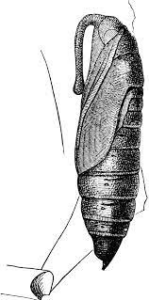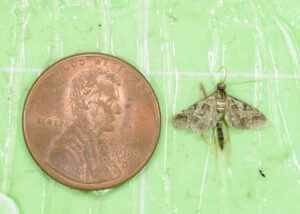Abdomen
The abdomen, or body, is composed of nine segments. In the larva it ranges from segments 5to 13. The eleventh segment of the larva holds a pair of anal claspers which protrude in some taxa and represent the genitalia. The females of some moths have a scent-emitting organ located at the tip of the abdomen which is used to attract mates.

